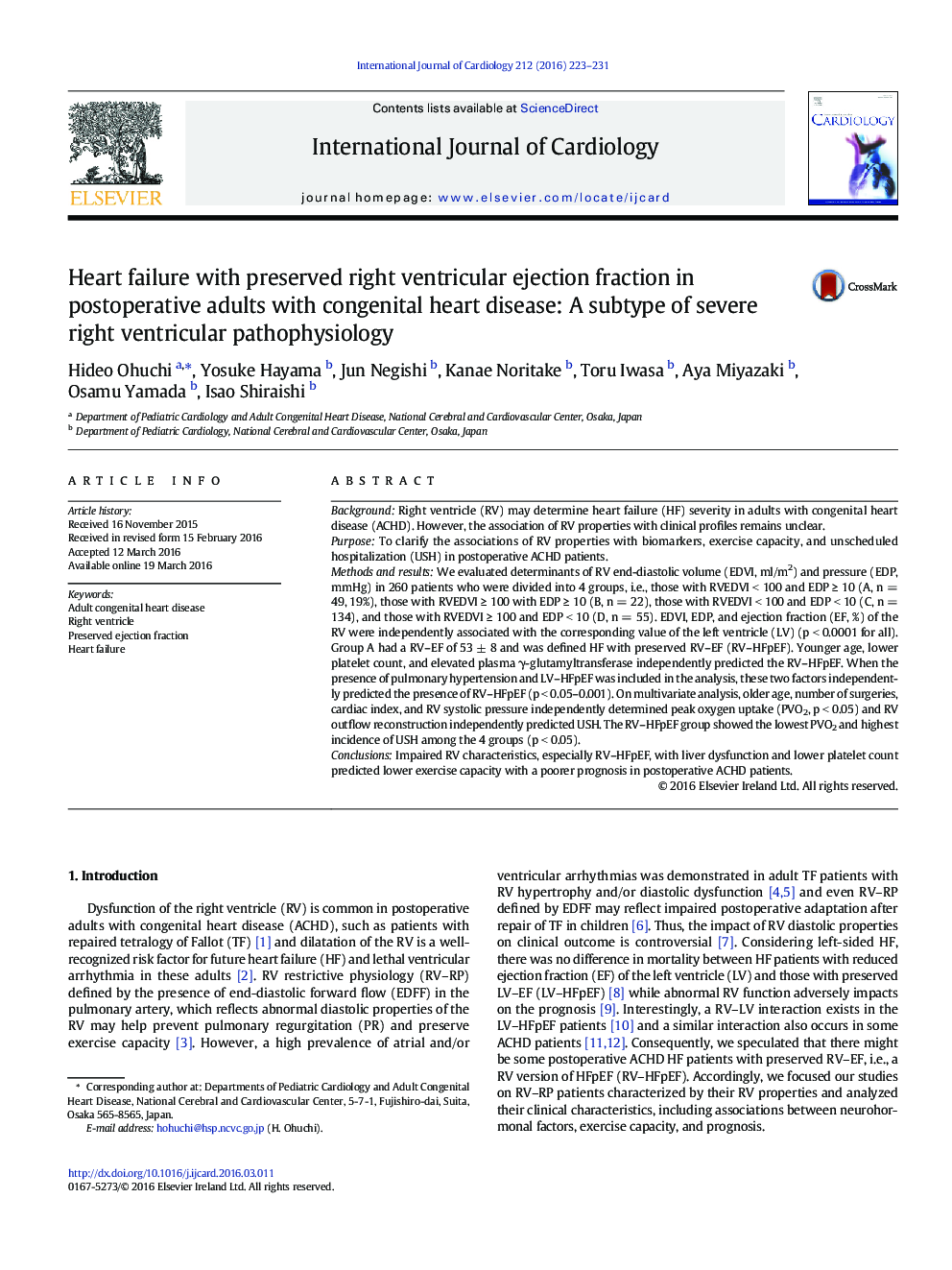| Article ID | Journal | Published Year | Pages | File Type |
|---|---|---|---|---|
| 5964377 | International Journal of Cardiology | 2016 | 9 Pages |
BackgroundRight ventricle (RV) may determine heart failure (HF) severity in adults with congenital heart disease (ACHD). However, the association of RV properties with clinical profiles remains unclear.PurposeTo clarify the associations of RV properties with biomarkers, exercise capacity, and unscheduled hospitalization (USH) in postoperative ACHD patients.Methods and resultsWe evaluated determinants of RV end-diastolic volume (EDVI, ml/m2) and pressure (EDP, mmHg) in 260 patients who were divided into 4 groups, i.e., those with RVEDVI < 100 and EDP â¥Â 10 (A, n = 49, 19%), those with RVEDVI â¥Â 100 with EDP â¥Â 10 (B, n = 22), those with RVEDVI < 100 and EDP < 10 (C, n = 134), and those with RVEDVI â¥Â 100 and EDP < 10 (D, n = 55). EDVI, EDP, and ejection fraction (EF, %) of the RV were independently associated with the corresponding value of the left ventricle (LV) (p < 0.0001 for all). Group A had a RV-EF of 53 ± 8 and was defined HF with preserved RV-EF (RV-HFpEF). Younger age, lower platelet count, and elevated plasma γ-glutamyltransferase independently predicted the RV-HFpEF. When the presence of pulmonary hypertension and LV-HFpEF was included in the analysis, these two factors independently predicted the presence of RV-HFpEF (p < 0.05-0.001). On multivariate analysis, older age, number of surgeries, cardiac index, and RV systolic pressure independently determined peak oxygen uptake (PVO2, p < 0.05) and RV outflow reconstruction independently predicted USH. The RV-HFpEF group showed the lowest PVO2 and highest incidence of USH among the 4 groups (p < 0.05).ConclusionsImpaired RV characteristics, especially RV-HFpEF, with liver dysfunction and lower platelet count predicted lower exercise capacity with a poorer prognosis in postoperative ACHD patients.
